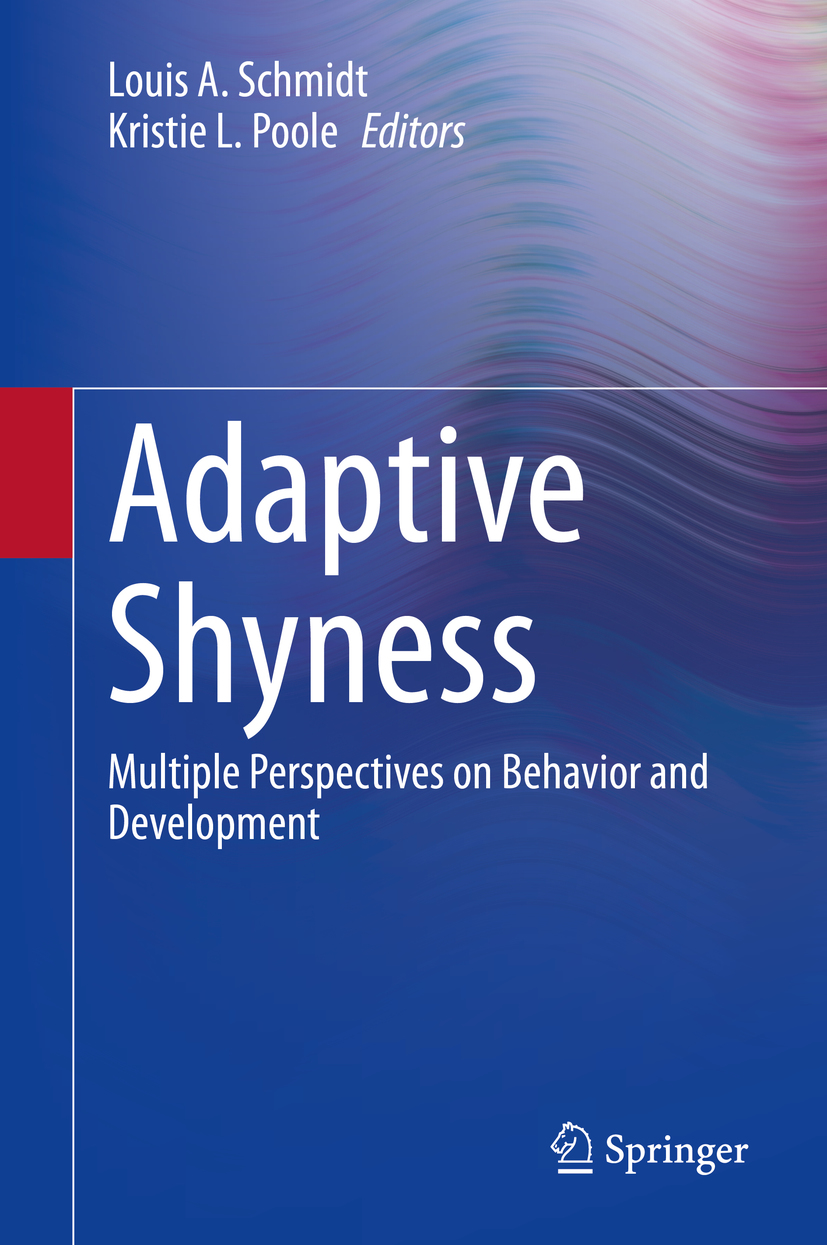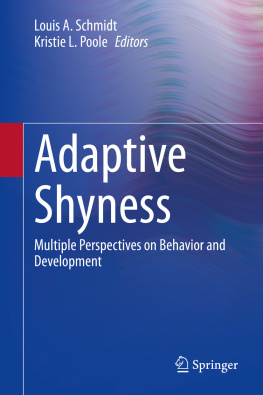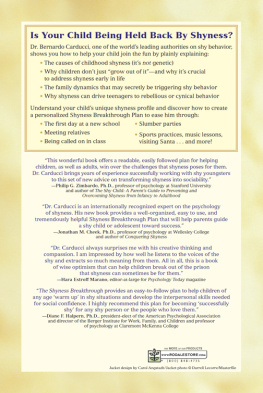Louis A. Schmidt - Adaptive Shyness: Multiple Perspectives on Behavior and Development
Here you can read online Louis A. Schmidt - Adaptive Shyness: Multiple Perspectives on Behavior and Development full text of the book (entire story) in english for free. Download pdf and epub, get meaning, cover and reviews about this ebook. year: 2020, publisher: Springer Nature, genre: Romance novel. Description of the work, (preface) as well as reviews are available. Best literature library LitArk.com created for fans of good reading and offers a wide selection of genres:
Romance novel
Science fiction
Adventure
Detective
Science
History
Home and family
Prose
Art
Politics
Computer
Non-fiction
Religion
Business
Children
Humor
Choose a favorite category and find really read worthwhile books. Enjoy immersion in the world of imagination, feel the emotions of the characters or learn something new for yourself, make an fascinating discovery.
- Book:Adaptive Shyness: Multiple Perspectives on Behavior and Development
- Author:
- Publisher:Springer Nature
- Genre:
- Year:2020
- Rating:3 / 5
- Favourites:Add to favourites
- Your mark:
- 60
- 1
- 2
- 3
- 4
- 5
Adaptive Shyness: Multiple Perspectives on Behavior and Development: summary, description and annotation
We offer to read an annotation, description, summary or preface (depends on what the author of the book "Adaptive Shyness: Multiple Perspectives on Behavior and Development" wrote himself). If you haven't found the necessary information about the book — write in the comments, we will try to find it.
Adaptive Shyness: Multiple Perspectives on Behavior and Development — read online for free the complete book (whole text) full work
Below is the text of the book, divided by pages. System saving the place of the last page read, allows you to conveniently read the book "Adaptive Shyness: Multiple Perspectives on Behavior and Development" online for free, without having to search again every time where you left off. Put a bookmark, and you can go to the page where you finished reading at any time.
Font size:
Interval:
Bookmark:


This Springer imprint is published by the registered company Springer Nature Switzerland AG
The registered company address is: Gewerbestrasse 11, 6330 Cham, Switzerland
To Alison, Willow, and our parents
Shyness is defined as inhibition and anxiousness in social situations. Shyness is an inherently interesting phenomenon to study because social interaction and social connection are so fundamental to human existence. Although a ubiquitous part of the human condition that has transcended time, as reflected with abundant references to it noted in religion, literature, poetry, music, and other arts over the years, we know little about the reasons for shyness. To date, much of the scientific work on shyness has been directed towards understanding the negative correlates and consequences of it. However, this deficit approach to the study of shyness began to change 20 years ago in which my colleague, Jay Schulkin and I, in the epilogue of an edited volume on shyness (Schmidt & Schulkin, 1999; see also, Schmidt & Tasker, 2000), recommended that future work should consider the positive and adaptive aspects of shyness. A number of the contributors to that volume also have contributions to this volume. Importantly, the de-pathologizing of shyness has continued to remain active in still more recent years (e.g., Crozier, 2014; Lane, 2008) in which researchers have begun to further question the pathologizing and over medicalization of normal variation in human personality behaviors and traits such as shyness. The reasons for pathologizing shyness are many, and beyond the scope of this volume for a detailed coverage of them, but they include societal and medical shifts in defining what constitutes emotional health and illness, the advent of the internet and social media, and the conceptualization and scientific study of the phenomenon from largely a Western and North American cultural view, to name a few.
Crozier, W. R. (2014). Childrens shyness: a suitable case for treatment? Educational Psychology in Practice, 30, 156166.
Lane, C. (2008). Shyness: how normal behavior became a sickness. New Haven: Yale University Press.
Schmidt, L. A., & Schulkin, J. (Eds.). (1999). Extreme fear, shyness, and social phobia: Origins, biological mechanisms, and clinical outcomes. New York: Oxford University Press.
Schmidt, L. A., & Tasker, S. L. (2000). Childhood shyness: Determinants, development, and depathology. In W. R. Crozier (Ed.),Shyness: Development, consolidation, and change(pp. 3046). New York: Routledge Palmer.
We would like to thank the many contributors to this edited volume, past and present students and research staff, and Michelle Tam and Judy Jones at Springer.
is Professor and Director of the Child Emotion Laboratory in the Department of Psychology, Neuroscience & Behaviour at McMaster University where he holds a Faculty of Science Research Chair in Early Determinants of Mental Health. His research interests are in the areas of temperament, socioemotional development, and developmental psychophysiology. He is particularly interested in how biology and early experiences shape the development of individual differences in temperament and socioemotional processes in typical and atypical populations.
Font size:
Interval:
Bookmark:
Similar books «Adaptive Shyness: Multiple Perspectives on Behavior and Development»
Look at similar books to Adaptive Shyness: Multiple Perspectives on Behavior and Development. We have selected literature similar in name and meaning in the hope of providing readers with more options to find new, interesting, not yet read works.
Discussion, reviews of the book Adaptive Shyness: Multiple Perspectives on Behavior and Development and just readers' own opinions. Leave your comments, write what you think about the work, its meaning or the main characters. Specify what exactly you liked and what you didn't like, and why you think so.













